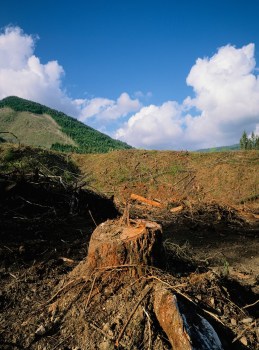Take action for restoring Nooksack watershed, stop a massive clearcut
Conservation Northwest / Jun 28, 2020 / Action Alert, Forest Field Program, National Forests
WILD NW Action Alert #303: Through July 1, submit comments to block a massive clearcut in the headwaters of the Nooksack River near Mount Baker.

At more than 190,000 acres, the North Fork Nooksack River watershed is a beloved, vibrant landscape near Mount Baker in need of ecological restoration to address the impacts of past aggressive logging and roadbuilding, and to prepare for a warming climate.
In 2018, the U.S. Forest Service embarked on a model process to develop a plan to address the myriad actions needed in this watershed on the Mt. Baker-Snoqualmie National Forest, including:
- Decreasing the decaying forest road network to a more sustainable level,
- Accelerating the development of old (or late successional) forest characteristics in what are presently young plantations with overly dense trees,
- Improving stream health and the overall watershed to better support endangered fish populations,
- Repairing trailheads and other recreational accommodations to better serve communities wishing to enjoy this beautiful forest, and more.
But in a bewildering move, the Forest Service canceled this holistic restoration effort in April 2020, and replaced it with a proposal to just cut and remove trees—including an old-school clearcut in Canyon Creek, a steep tributary home to Chinook salmon, steelhead and bull trout.
Public comments on this proposal are being accepted through Wednesday, July 1. Take action using our simple form to send a message to the Forest Service!
Nearly the entire Canyon Creek tributary, where the clearcut is being proposed, is classified by scientists as high risk for landslides and erosion, and is therefore designated as a Riparian Reserve where timber harvest is supposed to be prohibited.
This proposal is a mistake that can still be corrected. Use our suggested comments to ask the Forest Service to return to its holistic landscape-scale restoration proposal for the North Fork Nooksack. It’s important that forest managers hear from YOU to ensure that this project is redesigned to ecologically restore forest and aquatic habitat in this important watershed!
Please submit your comments using our action form, or copy our suggested comments below and submit them through the Forest Service’s comment page for this project.

Suggested comments on the North Fork Nooksack Vegetation Project scoping letter
Dear Mt. Baker District Ranger Uloth,
I’m writing to provide scoping comments for the North Fork Nooksack Vegetation Management Project #58218.
I support comprehensive restoration actions to improve forest health and ecological resilience in the North Fork Nooksack River watershed, including careful thinning of dense, young plantations to increase structural diversity, removing unnecessary roads, improving conditions for fish and wildlife, and enhancing recreation site access.
The North Fork Nooksack watershed contains vast old-growth forests with more than 1,700 acres of critical spotted owl habitat, the struggling remnant Nooksack elk herd, prime mountain goat habitat, and key wildlife corridors facilitating movement between the Forest, Wilderness areas and the larger transboundary area including wildlands in Canada. This designated Key 1 watershed also provides critical habitat for threatened fish species.
I strongly oppose the massive 1,900-acre clearcut around Canyon Creek that was recently proposed. Canyon Creek is an important North Fork Nooksack tributary known for floods and landslides, and is home to Endangered Species Act-listed Chinook salmon and steelhead as well as bull trout. Nearly the entire area proposed for clear-cutting is classified by scientists as high risk for landslides and erosion, and is therefore designated as a Riparian Reserve where timber harvest is prohibited. Rain on snow events in the recent past have caused extensive damage, costing millions to repair.
Given the extensively degraded aquatic conditions in Canyon Creek, there is a great opportunity here to reduce road densities that drive sediment delivery and flooding, improve large tree and old-growth habitat in riparian and lower elevations, reduce old forest habitat fragmentation, improve wildlife habitat, and increase ecological resilience to climate change (see Canyon Creek watershed analysis). These objectives, which align closely with the Nooksack Integrated Restoration and Enhancement Project, should be the priority actions for Canyon Creek and elsewhere in the Nooksack, not a massive clearcut.
Please reduce the forest road density in deer and elk winter range to two miles of road per square mile of area or less to improve habitat security, and look for other opportunities to reduce the road network in the North Fork Nooksack watershed while responsibly and sustainably supporting outdoor recreation accommodations. There are nearly 60 miles of roads that threaten aquatic ecosystem health that should be considered for removal through this project.
Thank you for the opportunity to submit public comments,
YOUR NAME
PLEASE SUBMIT YOUR COMMENTS BY JULY 1. LEARN MORE ABOUT OUR FOREST FIELD PROGRAM ON OUR WEBPAGE.


